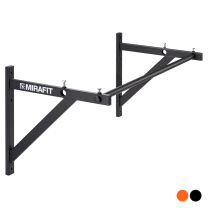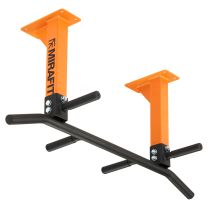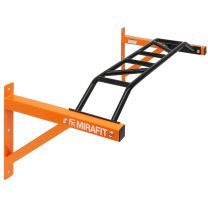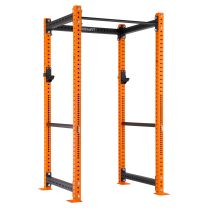Mastering the pull up: neutral grip
Mastering the pull up: neutral grip

If you're new to doing pull ups, you might not realise just how many variants there are.
Ask a Mirafit expert however, and you'll soon see there are over 25 different ways to work your way around a Pull Up Bar, each style engaging different muscle sets in different ways.
Want to know which one is the best? Quite simply, all of them.
Fitness is all about mixing things up and keeping your body guessing. And mastering the straight bar pull up is just the beginning.
The neutral grip pull up – or hammer grip pull up – is great for all levels.
Obviously if you're still working up to doing a full pull up, keep at it before you start to develop your variations.
But the neutral grip pull up will really help you develop your forearm, as well as your bicep strength.
And because you can angle your body with a neutral grip, you can target your chest and abs more as well as start to do front levers.
They're also great for anyone prone to wrist and shoulder problems as they put less stress on your joints.
HOW TO DO A NEUTRAL GRIP PULL UP
When learning how to do something new, it can be first easier to learn how not to do something.
We've all spotted that one guy in the gym who's taken kipping to the next level. But aside from flailing around on the bar, there are a few things you definitely shouldn't be doing:
THE DON'TS:
• A quick come down – coming back down again is just as important as going up. Negative pull ups are indeed a thing and they really help to strengthen your muscles that get you up to the bar in the first place. No longer are you using that momentum to lift your bodyweight, but you're in fact resisting gravity. And takes a lot of strength to do. If you just let your body drop after reaching the bar, you're at risk of injuring your joints. Make sure to come back down slowly into an active hang, and then full-extend gently and with control.
• Keep a level head – lots of people look up towards the bar when they start doing pull ups. Remember to keep your spine straight. This will often mean looking slightly downwards as you lift your body up as you're at an angle. When you reach the top, your body should be as aligned as possible.
• Failure is not an option – often used as part of strength training, pull ups are not about training to failure. To develop explosivity and to maintain good joint health, pull ups are some of the only types of exercises where we wouldn't recommend training to failure. Instead you want to be developing your power and training your nervous system to cope with the exercise. This means taking longer recovery breaks and making sure that you stop as soon as your form starts to slip.
• Recognise your body type – technique is never going to be the same for everyone. Height, build, flexibility and past injuries are all going to contribute to your overall form. And what's best for one person, isn't going to be best for you. Instead of trying to do what you think is right, get a trainer or an experienced friend to feedback on your pull ups so you can optimise your form.
THE DOS:
• Pull ups are about lifting your own bodyweight and even if you're a fitness connoisseur, there aren’t many people who've been able to master the pull up straight off. Use a Resistance Band or a Weight Bench to help you get your technique right before you start to take on your full bodyweight.
• Hold the hammer grip bars so the insides of your wrists are facing each other. Wrap your thumb under the bar and keep your elbows tucked in.
• Straighten your spine and take yourself into an active hang so that your shoulders are down.
• While keeping your body controlled, pull up with an explosive motion so that the bar meets your collar bone.
• At the highest point, you should make sure your abs are tight and your elbows are fairly still.
• Lower yourself back down carefully into an active hang and then straighten out.
• Repeat as long as you can while maintaining a good form.
To vary your neutral grip pull ups, you can start to angle your body back. Only do this if you are strong enough to keep your body straight. But doing this will help you train your chest and core muscles as well as your hip flexors.
Great for developing all over body strength which will in turn help you to progress to other styles of pull ups.
If you'd like to know more about our pull up bars, you can read all about them as well as what exercises you can do with them, in our Pull Up Bar Guide.
For more content, follow us on Instagram, YouTube, TikTok, and on our official Mirafit Facebook page.
Enter your email to signup to our newsletter







